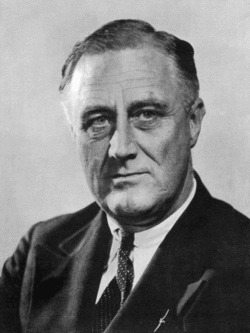If you’re an Internet user, chances are you know about the GIF, an image format that predates the World Wide Web. It was invented in 1987 at CompuServe, then a largely text-based online service. GIF stands for Graphic Interchange Format, and to say it has withstood the test of Internet time is an understatement.
A GIF can be a static image, but these days it’s often used to create simple animations that are easily shared via the Web, email or social networks. They are at the heart of sites like Tumblr, which sold this week to Yahoo for $1.1 billion.
Great animated GIFs are brief moments of joy. Here are three of my favorites.
Yes, I’m a big fan of cat GIFs. Deal with it.
You can thank Steve Wilhite for GIFs. And on Tuesday night, the Web itself did just that. Wilhite, who came up with the GIF while working as an engineer at CompuServe, was given a lifetime achievement award at the 2013 Webby Awards. Fittingly, Tumblr founder David Karp introduced Wilhite.
You’ll notice that Karp never actually says the word “GIF” out loud in this video. Smart man. That’s because the pronunciation of GIF has long been a subject of intense debate on the Internet.
Some people pronounce it “jif”, with a soft G. Others prefer “gif”, with a hard G. Which is correct?
According to the man who came up with it, it’s “jif”. In an email interview with the New York Times’ Bits blog in advance of Tuesday’s ceremony, Wilhite made that very clear:
He is proud of the GIF, but remains annoyed that there is still any debate over the pronunciation of the format.
“The Oxford English Dictionary accepts both pronunciations,” Mr. Wilhite said. “They are wrong. It is a soft ‘G,’ pronounced ‘jif.’ End of story.”
To allow its users to view images, CompuServe offered a program called CompuShow. The pronunciation of GIF apparently was an early matter of disagreement, because in a Frequently Asked Questions document distributed with the software, the issue of how to say GIF was addressed:
The GIF (Graphics Interchange Format), pronounced “JIF”, was designed by CompuServe and the official specification released in June of 1987.
Regardless, people who’ve used the hard-G version in error all these years stick to their guns, and with the NYTimes piece on Wilhite’s award, the debate flared anew on social media, particularly on Twitter. It raged hard enough that #GIF was a trending topic for much of Tuesday evening. I suspect most normal people found it annoying.
My Twitter stream is all about the Super Bowl and how to pronounce a stupid word, you guys are the WORST.
— Alex Ragsdale (@alexrags) May 22, 2013
I’ve always been a soft-G GIF person myself, so I waded into the fray to stand up for what’s right and true.
@calebgarling I think the inventor’s word takes precedence over the sloppy language habits of the masses.
— dwight silverman (@dsilverman) May 21, 2013
@calebgarling For example, would you argue with @linus_torvalds about the pronunciation of Linux? bit.ly/YXHyIR Of course not!
— dwight silverman (@dsilverman) May 21, 2013
This drew the attention of Houston-area attorney Mark Bennett, who expanded it to a general discussion of disputed pronunciations. He wanted to focus on the way Houston residents say words common to the area, and he opted to drag Mayor Annise Parker into the discussion.
@dsilverman Where do you come out on “bayou”? @anniseparker
— Mark W. Bennett (@MarkWBennett) May 21, 2013
I said I pronounce it “bye-yoo”, but Parker took the bait, jumped in and begged to differ.
I’m from Houston. It is Buffalo Bayou, pronounced Bye-oh, not Bye-you!-A@dsilverman @markwbennett
— Annise Parker (@anniseparker) May 22, 2013
The mayor certainly has a right to be wrong, but what I really wanted to know: Where does she stand on GIF?
Her response was that of a master politician:
@dsilverman LOL. I have never said anything but GIF.
— Annise Parker (@anniseparker) May 22, 2013
So where do you come down on the pronunciation of GIF? Hard or soft G? And “bayou”? Bye-oh or bye-yoo?
Let us know in the comments.



























